|
By Alaina Rivero & Tania Salgado One thing Pedro has reiterated on this trip is to take risks and be uncomfortable so you can learn. In the past week of being in Brazil we have stepped out of our comfort zones and ate chicken heart, hiked what seemed to be a million miles up a mountain, and took some dance lessons and watched back videos Pedro took of us only to realize how stiff we are. We have learned so much in such a short time and the days seem to go by terribly fast. We have had lectures about religion, native people, and education in Brazil. But one workshop in specific has piqued our interest. Capoeira is something both Alaina and I have been mesmerized with. Capoeira is an Afro-Brazilian martial arts form that incorporates acrobatics, dance, percussion, and rhythmic dialogue of body, mind, and spirit. There have been records of Africans and slaves dancing and playing instruments in the 17th century (Pinho 2020, 6). This dance holds power as it has been kept alive and is still taught to kids. We have seen capoeira being performed a few times both in Salvador and Lençóis, and each time we are amazed at how history is kept alive and embraced through music and dance. On our second day in Salvador, we had a capoeira workshop led by Mestre Sapoti. He first talked about the background of capoeira. It is not certain if capoeira is a dance or a fight. It starts with two people shaking hands and then beginning to move to dodge the opponents’ hits. The group of students that were there with Mestre Sapoti demonstrated for us what capoeira looks like. We loved seeing them do cool tricks like handstands, cartwheels, aerials, and other gymnastic moves. After the demonstration, Mestre Sapoti taught us some basic capoeira moves. We paired up trying out the new dance moves feeling more confident in what we were doing. After a few minutes of practicing, he stops us and brings out the musical instruments. He describes each instrument and plays the beat of the song that the students were dancing to. He gives some of us instruments to play while the rest of us sit in a circle. This part of the workshop ties back to what we had read in class about the several municipal laws that were enacted to prohibit “the display of African customs with drumming” (Pinho 2020, 7). Clearly there was no success in the prohibition of displaying African customs with drumming. This goes to show how Afro-Brazilians can never be silenced.
We both have been amazed at the way empowerment and history lives on through capoeira. We see the power capoeira holds as it continues to embrace the history of Afro-Brazilian people. We understand the importance of keeping capoeira alive and are grateful that we are able to have this experience. We are absolutely loving Brazil and its culture and can’t wait to tell others about everything we’ve learned. Sources: “Capoeira History.” ABADÁ-Capoeira San Francisco (blog). Accessed May 23, 2024. https://www.abada.org/capoeira-history/ Capoeira workshop with Mestre Sapoti at the school of Alianca Francesa May 17, 2024. Capoeira workshop at Academia de Mestre Cascudo in Lençóis May 20, 2024. Pinho, Osmundo. “Race and Cultural Politics in Bahia.” In Oxford Research Encyclopedia of Latin American History, 2020.  Tania Salgado is a sophomore at CSB+SJU, majoring in Political Science with a minor in Data Analytics. She is from Sauk Centre, Minnesota. Tania has researched the many factors that contribute to violence against women at a worldwide scale. She is continuing her research this summer and is grateful for the opportunity to learn more about this issue in Brazil. She can't wait to spend three weeks in Salvador!  Alaina Rivero is a sophomore at College of Saint Benedicts, Hoping to pursue pharmaceutical sales after college with a major in global business leadership and a minor in biology. She is originally from Dayton, Minnesota. Alaina enjoys staying active, going to the gym, being with family and friends, and shopping. She loves learning about different cultures and how global health plays a role. Something that many people don't know about Alaina is that she swam competitively for 10 years. Alaina can't wait to broaden her knowledge on global health and sales in Brazil!
0 Comments
By Allison Parker and Joselyn Rubio-Correa During our first week here in Salvador, Brazil, we’ve felt the vibrant and strong influence of Afro-Brazilian culture. The city reflects the traditions of African origin that live on today. Before our departure, we learned about the current racial and gender inequalities in Brazil, and specific to the state of Bahia. Salvador was, originally, the capital of Bahia during the period when the Portuguese enslaved the Indigenous people of Brazil and Africans. Although the Portuguese attempted to control and diminish Indigenous and African culture, the people and traditions held strong. As our professor quotes “oppression leads to resistance”. Examples of oppression and attempts to erase culture in Afro-Brazilians would be in the 1900’s when the religions of Candomblé and Umbanda were illegal to practice and labeled as “the devil” in the eyes of Christianity. Although Candomblé and Umbanda are no longer illegal, they continue to be demonized by the Christian church, as noted by Alcides, Pai De Santo. In addition, Capoiera, an Afro-Brazilian traditional practice, was criminalized and illegal to practice in the late 1800’s and into the 1900’s. Nationally, the practice was outlawed and people who practiced Capoiera faced harmful consequences and even death. However, it was still practiced in secret, passed down to the children and is now recognized as a national practice or symbol belonging to Afro-Brazilians. The Candomblé religion originated from the religious syncretism of West African religions and Christianity. Unlike Christianity, in Candomblé there is no belief of a devil, heaven, or hell. To become a follower of Candomblé, you have to know Portuguese and be initiated into the religion by a pai de santo (priest). Once you have been accepted into the religion, you are assigned an Orixá (god) and it is with you until death. Followers of Candomblé worship many different Orixás and often provide them with offerings as a way of giving thanks. Another tradition practiced is the art of Capoeira. As defined by Osmundo Pinho, social anthropologist in Bahia, “Capoeira is the expressive cultural African origin that combines ritual, dance, and body fight, nowadays practiced as a sport around the world” (Pinho, 2020). We learned that Capoeira is an art form like a dance that resembles a fight. However, Capoeira can be in the form of a real fight if a person feels threatened. As we were humbled by our flexibility and coordination skills, we learned the value and belief of Capoeira. Music, dance, movements and spirituality are crucial in the practice of Capoeira. The art is within the spiritual energy called axé (Rehard, 2021). Rehard uses a definition quoted by the scholar Barabara Browning “pure potentiality, the power-to-make-things-happen”. Rehard states that “Capoeiristas are able to engage in bodily dialogues with each other while using personal agency to shape the flow of the game for their own advantage” (Rehard, 2021). From our first-hand sight, capoeira is a controlled, strong, elegant practice that takes dedication, skill, and passion. The capoeiristas should never lose eye contact with one another, even when they are upside down or flipping. During our trip to Lençóis, Brazil, we were able to watch many Capoeira performances by students and teachers. In all the performances, the dancers moved in sync with one another and always watched one another, to prepare for their partner's next move. For musical expression, we saw the berimbau, atabaque, pandeiro, and agogo. (Itacare, 2024). Singing and clapping are encouraged as the audience gathers around the roda, or ring. Both of these Afro-Brazilian traditions focus on the connection to corpo, the Portuguese word for body. Capoeira uses the body as a form of dance and expression while Candomblé uses the body to connect with nature and the environment. Our time here has shown us the importance of the connection between the mind and body as well as our place in relationship to the natural world. Sources: Itacaré. “Capoeira - Itacaré Beach - Bahia - Brazil.” Www.itacare.com, 2024, www.itacare.com/itacare/capoeira/. Accessed 21 May 2024. Pinho, Osmundo. “Race and Cultural Politics in Bahia.” Oxford Research Encyclopedia of Latin American History, 17 Dec. 2020, https://doi.org/10.1093/acrefore/9780199366439.013.946. Accessed 23 May 2024. Rehard, Abby. ““Axé, Capoeira!”” ReVista, 25 Jan. 2021, revista.drclas.harvard.edu/axe-capoeira/. Accessed 21 May 2024.  Allison Parker is a sophomore at CSB+SJU pursuing a major in Sociology with an Anthropology concentration, and a minor in Global Health. Her hometown is Belview, located in southwest Minnesota. She’s interested in learning about social behaviors and better understanding social, health, and cultural life issues. She looks forward to experiencing Brazilian culture and applying her studies abroad in Salvador.  Joselyn Rubio-Correa is a sophomore at the College of Saint Benedict and is studying Computer Science with a minor in Political Science. She is a first-generation Mexican American who grew up in Atlanta, Georgia. Joselyn is the oldest of three and is looking forward to trying new foods, learning about Brazil’s culture, and sharing her experience in Brazil with her two younger siblings. By Alexa DeLeon Traveling from Chicago to Salvador, Bahia was an experience filled with exhaustion, but the journey has been significantly rewarding in such little time. Despite only being here for about four days, I’ve been amazed by how much I have enjoyed Salvador and, most importantly, how much I’ve learned about its rich culture. Adjusting to a new culture, especially with a language barrier, can be extremely challenging. However, the vibrant and fascinating aspects of Salvador’s culture have made it easy and enjoyable to want to learn more. Our first lecture focused on Candomblé and religion in Brazil, where Prof. Wyllis Santos explained how Candomblé, an Afro-Brazilian religion, significantly influences the cultural and spiritual lives of many Brazilians. My immediate reaction was to connect this to Crooked Plow. In class, we read Crooked Plow by Itamar Vieira Junior, which has become one of my favorite books. I found myself wanting to learn more and had many questions about the different spirits, the healers, and the community's trust in natural healing. I could not help noticing the correlation between the two, especially community, it is such an important part of the characters' lives in the book and in Candomblé. During the lecture, Prof. Wyllis Santos explained the spiritual, nature, and community-based connection that Candomblé followers emphasize. In Crooked Plow, the characters often turn to natural healing methods and spiritual practices to cope with their hardships, reflecting the Candomblé belief in the healing power of nature and the spiritual realm. Throughout the novel, the characters rely on traditional herbal remedies and the guidance of spirits. While Prof. Willy Santos explained the importance of nature and spirituality, he mentioned the significance of community help, specifically how pregnant women who produced milk helped others by breastfeeding their children if their milk dried up or for any reason, they were unable to breastfeed. This immediately reminded me of Crispiniana and Crispina. The story of Crispina breastfeeding Crispiniana’s child for two years is a significant example of communal support, especially among women. This mirrors the practices in Candomblé communities, where women play crucial roles. The act of breastfeeding another's child is a gesture of care and solidarity, highlighting the community's collective responsibility for everyone's well-being. During our first week we also had another lecture focused on the practice of Candomblé with Pai de Santo. He spoke a couple times about the importance of nature. I realized that the idea of the importance of nature became a common theme these past couple of days and has been stuck with me since. Nature plays a symbolic role in Candomblé, and I cannot help but wonder how different my ideas, beliefs, and mentality would be if nature and spirituality was deeply involved in my life. I was born into a catholic family, but we are not religious and practice only some catholic traditions. I do not necessarily agree with many teachings in the Catholic community, and having learned about spirituality and the importance of nature has motivated me to change the way I think and the way I want to live. During our time on campus, we delved into the rich traditions of Black music in Bahia, which initially left me unaware of the profound significance of movement and dance accompanying the music. Osmundo Pinho's book chapter, Race and Cultural Politics in Bahia, illuminated the importance of this movement, noting that “Black music in Bahia will be taken here as a social phenomenon, as an identity platform, and as an expressive discourse, central to the elaboration of forms of identity” (Pinho 2020, 3). In line with the themes of nature and spirituality, our workshop on Afro-Brazilian dance with Antonio Cozido was particularly inspiring. Antonio emphasized that our bodies are temples, and he linked dancing to the flow of energy within us. His explanation of how we control our bodies and manifest energy offered a new perspective on the connection between physical movement and spiritual expression. Black music and Afro-Brazilian dance are integral parts of the Afro-Brazilian culture, underscoring the idea that the body is sacred. Despite my dancing abilities not being present and my two left feet clearly shown, Antonio’s insights about the importance of dance and how it channels energy resonated deeply with me. This workshop connected seamlessly with the lectures we've had, highlighting the interconnectedness of nature, spirituality, and the human body. Experiencing the culture by learning and practicing the dance has deepened my appreciation for these values and inspired me to embrace this way of living. I cannot wait to spend another two weeks here; I am excited to learn more about the culture and hope to have a better understanding and a different mindset by the end of my time here. Sources: Pinho, Osmundo. “Race and Cultural Politics in Bahia.” In Oxford Research Encyclopedia of Latin American History, 2020. Vieira Junior, Itamar. Crooked Plow. Verso Books, 2019.  Alexa DeLeon is a sophomore at the College of Saint Benedict and Saint John's University, hoping tp purse a major in political science, with a concentration in pre-law. She is originally from Cicero, Illinois. Alexa enjoys learning about underrepresented communities in the realm of policy issues and likes to be an advocate for inclusion for marginalized communities. Something fun about Alexa is that she has seven dogs, 3 males and 4 females. By Carter Potthoff and Morgan Van Beck After a missed flight and 24 hours in Chicago, we were more than happy to finally land in Salvador and settle in. On the way to the hotel in the middle of rush hour traffic, we saw a massive building with the words “Jesus Cristo é o senhor” and a huge logo reading “Universal”; it was one of the Protestant churches that have exploded in popularity in Brazil in the past few decades. Being the future social scientists that we are, we both instantly knew that we needed to investigate further and decided to use our first blog post for this trip to dive deeper into religion in Brazil and reflect on our experiences with religion here in Bahia thus far. The religious dynamic of Bahia is super interesting because it not only includes the rapidly growing Protestant movements, but is also the birthplace of Candomblé, one of the most practiced Afro Brazilian religions. Our brief introduction to Candomblé included a lecture by Professor Willys Santos, who is a scholar on Brazilian religions at UFBA and also a Candomblé priest as well as a lecture and visit to a terreiro, a place in which Candomblé is practiced, by and alongside Alcides, another Candomblé priest or Pai de Santo. These have been our favorite lectures thus far. We learned that Candomblé is not just a religion, but a way of life. Followers of Candomblé focus on their connection with their own self, their communities, and nature, and they connect with these things via their orixás, or the spirits that are with someone from birth until after death. Pai Alcides talked about the important role of women in Candomblé, which is a matriarchal religion, because female slaves from Africa were the ones who kept the African roots of Candomblé alive. He also talked to us about the role Candomblé has in its followers lives and how followers engage with the religion. He explained that the terreiro created a space for family that was taken away by the slave trade. It is a place for community and gathering. He also explained that followers of Candomblé go to priests based on their needs, whether physical, emotional, relationship, social/economic, etc. Based on that, the Pai de Santo then provides direction to help us better understand ourselves and what we need in order to resolve the issue. Pai Alcides said “O Candomblé vai equilibrar, não curar” or “Candomblé will balance, not cure”. This line, for us, is what Candomblé is all about; seeking balance within one’s life in order to progress forward. Learning about Candomblé here in Brazil has also helped us to retroactively better understand some of the material that we read in class, specifically, the book Crooked Plow by Itamar Vieira Junior. This book gave us a lot of insight into the dynamics of race, gender, and inequality in Brazil. It also centered on Afro Brazilian religion, which we were very unfamiliar with. Specifically, Jarê, which was practiced by the family that the book centered on. Zeca was a Jarê healer, but before coming to Brazil, we couldn’t fully understand what his role in the community really was (Vieira Junior 2019). Our time with Professor Willys Santos and Pai Alcides taught us the principles of Candomblé and other Afro Brazilian religions in an approachable way that made us appreciate Crooked Plow so much more. As two students from Stearns County, we both really enjoyed diving into Candomblé. It’s something that we would never have had the chance to experience back home. Something that we are a little more familiar with is Protestantism; although, we were not familiar with its role in Brazil before this class. In Professor Willys Santos’s lecture, he talked about how Protestantism and Candomblé interact in Brazil. He explained that Afro Brazilian religions have historically been targeted and suppressed by those in power, who have historically been Catholic and are now increasingly Protestant. This tied into part of the lecture that Flavia Biroli gave at the CSBSJU Multicultural Center. She discussed the ways in which Protestantism is exploding in Brazil, its tie to conservative movements, and its effect on the decline of Catholicism. We also read about the changing religious dynamics of Brazil in Pereira’s Modern Brazil: A Very Short Introduction and discussed it with Karine Belarmino, a PhD student who researches clientelism within Brazilian Protestant movements. Karine explained that these Protestant denominations are gaining strength by providing services in communities that lack them, which makes adherents flock to their congregations, thus “buying” their votes in exchange for these services (Belarmino). This has culminated in a strong Brazilian Protestant movement, both political and religious, which was reflected in the grandiose church that we saw on our drive home from the airport. An influx of congregants also means that Protestant churches are gaining political power. In addition to listening to Flavia Biroli’s lecture, we also read her 2016 article titled Political Violence Against Women in Brazil: Expressions and Definitions. In this article, Flavia discussed how a strong conservative movement and backlash is resulting in political violence against women, but she also discussed the role of Protestant churches in this conservative movement. Many prominent Protestants are gaining political power by winning the votes of the growing number of Protestants in Brazil. These politicians, who are sometimes pastors, campaign on platforms of Protestant values, such as traditional family and gender roles (Biroli 2016). These Protestant politicians are also able to promote policies that target non-Christians in Brazil, such as those who practice Candomblé, which brings us full circle back to Professor Willys Santos’s lecture on our first full day here. It has been a whirlwind first couple of days, but we are looking forward to everything else that Brazil has in store for us! Photos from a shrine to one of the Candomblé orixás, Yemanjá, in Salvador, Brazil. Sources: Belarmino, Karine. “Clients of God: Introduction.” Ph.D. Dissertation. University of Minnesota. Forthcoming. Biroli, Flávia. “Political Violence against Women in Brazil: Expressions and Definitions / Violência Política Contra as Mulheres No Brasil: Manifestações e Definições.” Revista Direito e Práxis 7, no. 15 (September 14, 2016). Pereira, Anthony. Modern Brazil a very short introduction. Oxford, United Kingdom: Oxford University Press, 2020. Vieira Junior, Itamar. Crooked Plow. Verso Books, 2019.  Carter Potthoff is a senior at Saint John's University, majoring in Hispanic Studies and Biology and minoring in Latino/Latin American Studies. He is originally from Sartell, MN. Some of his many research interests include indigenous groups, cultures, and religions in southern Mexico and Guatemala, immigration in the Americas, and racial dynamics in Latin America. In his free time, Carter loves trying out new recipes, spending time with his family and friends, and most people don't know this, but he is an avid birder! Carter is excited to visit Brazil for a second time and learn firsthand about race and gender!  Morgan Van Beck is a senior Political Science and Hispanic Studies double major with a minor in Latino/Latin American Studies. She is originally from Sartell, Minnesota. Morgan's most formative educational experience was traveling around Guatemala with the Guatemala Human Rights Commission, which inspired the theme of her senior distinguished thesis: human rights abuses in post-conflict societies. Morgan recently received a Fulbright grant to teach English in Colombia and will be moving there shortly after graduation. Over the next three weeks my students will post about their experiences in Salvador and beyond, connecting their experiences to what we learned about race, gender, and inequality. I told them to think of these blog posts as "look parents, I am having a good time but I also have something smart to say about it!" Below is a brief introduction for each of the students blogging away in Brazil.  Alexa DeLeon is a sophomore at the College of Saint Benedict and Saint John's University, hoping tp purse a major in political science, with a concentration in pre-law. She is originally from Cicero, Illinois. Alexa enjoys learning about underrepresented communities in the realm of policy issues and likes to be an advocate for inclusion for marginalized communities. Something fun about Alexa is that she has seven dogs, 3 males and 4 females.  Morgan Van Beck is a senior Political Science and Hispanic Studies double major with a minor in Latino/Latin American Studies. She is originally from Sartell, Minnesota. Morgan's most formative educational experience was traveling around Guatemala with the Guatemala Human Rights Commission, which inspired the theme of her senior distinguished thesis: human rights abuses in post-conflict societies. Morgan recently received a Fulbright grant to teach English in Colombia and will be moving there shortly after graduation.  Carter Potthoff is a senior at Saint John's University, majoring in Hispanic Studies and Biology and minoring in Latino/Latin American Studies. He is originally from Sartell, MN. Some of his many research interests include indigenous groups, cultures, and religions in southern Mexico and Guatemala, immigration in the Americas, and racial dynamics in Latin America. In his free time, Carter loves trying out new recipes, spending time with his family and friends, and most people don't know this, but he is an avid birder! Carter is excited to visit Brazil for a second time and learn firsthand about race and gender!  Allison Parker is a sophomore at CSB+SJU pursuing a major in Sociology with an Anthropology concentration, and a minor in Global Health. Her hometown is Belview, located in southwest Minnesota. She’s interested in learning about social behaviors and better understanding social, health, and cultural life issues. She looks forward to experiencing Brazilian culture and applying her studies abroad in Salvador.  Alaina Rivero is a sophomore at College of Saint Benedicts, Hoping to pursue pharmaceutical sales after college with a major in global business leadership and a minor in biology. She is originally from Dayton, Minnesota. Alaina enjoys staying active, going to the gym, being with family and friends, and shopping. She loves learning about different cultures and how global health plays a role. Something that many people don't know about Alaina is that she swam competitively for 10 years. Alaina can't wait to broaden her knowledge on global health and sales in Brazil!  Ignacio Sanchez Romero is a senior at Saint John's University majoring in Economics with a minor in Data Analytics. He is from Minneapolis, Minnesota. He recently presented a research project on how migration status affects earnings from wages. He discovered that gender and migration status have an impact on wages. During his time in Brazil, he plans to expand on this work by conducting additional research on racial and gender inequality. One interesting fact about him is that this will be his second time leaving the country.  Jennifer Agustin Ambrocio is a Senior at the College of Saint Benedict, double majoring in Political Science and Hispanic Studies with a minor in Latin Latino American Studies. She is originally from Bloomington, Minnesota. Jennifer enjoys watching and reading the news at a international level. She studied abroad 3 times already, and Brazil will be the 4th time  Tania Salgado is a sophomore at CSB+SJU, majoring in Political Science with a minor in Data Analytics. She is from Sauk Centre, Minnesota. Tania has researched the many factors that contribute to violence against women at a worldwide scale. She is continuing her research this summer and is grateful for the opportunity to learn more about this issue in Brazil. She can't wait to spend three weeks in Salvador!  Joselyn Rubio-Correa is a sophomore at the College of Saint Benedict and is studying Computer Science with a minor in Political Science. She is a first-generation Mexican American who grew up in Atlanta, Georgia. Joselyn is the oldest of three and is looking forward to trying new foods, learning about Brazil’s culture, and sharing her experience in Brazil with her two younger siblings. In April of 2024, Dr. Flavia Biroli visited the CSB and SJU campus to present her research, part of the Global Awareness Lecture Series. Dr. Biroli's research on far-right politics and gender in Brazil is much needed. The study mapped and analyzed the far-right politics on gender during the government of Jair Bolsonaro (2019-2022). The talk will discuss its developments considering two issues: abortion and gender-based violence. Previous research found that the degree of conflict and the actors involved vary according to the issue. Historically, disputes on abortion are contentious and involve religious actors and perspectives. The politicization of violence against women had a distinct trajectory, reaching a broader consensus expressed in legislation and policy. The convergence between conservative religious activism and the far-right affected these dynamics – not only in Brazil or Latin America, as studies on Eastern/Central Europe identify similar displacements. Still, far-right politics activates distinct mechanisms to block feminist politics in these two issues. I discuss these mechanisms, connecting them to the disputes over democratic institutions and values. Based on that, I make the point that there is a tight connection between the struggles over gender and the present and future of liberal democracies. Below is her talk:
Yesterday I had the first meeting with the students who will be joining me in Brazil in May 2023. We start classes in March, but I get way too excited and want to start sharing stuff as soon as I can with students!
This first post is a review of the stuff we did in 2022. To complement the class, I invited various scholars to campus and remotely to help my students understand more about Brazil. Below are the recordings for some of these talks!
Spotlight on Brazil Series - Brazil under US influence: 1964-2021, Xavier Vatin
Spotlight on Brazil Series - Social inequalities in Brazil: Effects and Outcomes in Life and Health Conditions, Clarice Mota
Spotlight on Brazil Series - An Informal Conversation on Racial Issues & Basketball in Brazil, Jamir Garcez
Spotlight on Brazil Series - Fernando Conceição: Violence Against Minorities - Brazil & US, Fernando Costa da Conceição
By Lily Fredericks, Brianna Kreft, and Hailee Thayer If we had a soundtrack of our trip to Rio de Janeiro, “Girl From Rio” by Anitta would be the main track. We felt like main characters throughout our week there, especially when we were able to find our own way in the city and figure things out for ourselves. However, there were definitely times where we felt like the quintessential dumb Americans, such as when we looked like deer in the headlights when people tried to speak to us, when we couldn’t tell the uber driver where we were going, or when we ordered the completely wrong menu item. But we got good at laughing these things off, making the best of each situation despite often feeling out of place, and adapting to the surrounding situation and culture. Additionally, another thing that we noticed almost immediately when we stepped foot in Rio was that we did not get nearly as many stares and yells from people on the streets as we did in Salvador for looking so out of the ordinary. We quickly realized that this was because we actually did not look out of the ordinary in Rio where there is a much higher population of white folks than in Salvador, which has one of the highest populations of black and brown folks as we learned in class. As sad as it is, this made us feel safer than we felt in Salvador, because we were able to blend into the crowd more. We also discussed how Rio was simply more touristy than Salvador, which also could be a reason that we felt safer there. Perhaps one of our favorite things we did while in Rio was a backstage Carnaval tour that we booked through Airbnb experiences. Even though we thought that the more scenic and popular activities like visiting Christ the Redeemer or Sugarloaf Mountain would be the highlights of our trip, while they were still amazing, the Carnaval tour was the most memorable because we really learned more about Brazilian culture and how big of a deal this event is for many Brazilians. We got to see the behind the scenes of the workings of the Samba school that was the winner of Carnaval in 2022. We got to see the breathtaking floats, costumes, and the hard work that constitutes the year-long preparation for Carnaval. We also got to learn what each float, costume, and dance represented, and the Samba school’s theme for this year was Candomblé, which was very cool to see considering we had learned all about this religion while in Salvador. To our surprise, at the end of the tour, we got to dress up in old Carnaval costumes and even dance with a professional Samba dancer. It was very fun, and we were able to let loose a bit, even in the company of strangers. Learning the details of what goes into Carnaval and the meaning behind it made us appreciate it even more than we already did. Another favorite excursion of ours was visiting Cristo Redentor (Christ the Redeemer) and Sugarloaf Mountain. Even though it was slightly cloudy when we went up to see Christ, the views were still amazing. The statue was a lot bigger than we thought and we had to take pictures at a low angle to get him in it. While we were up there, we saw a group of men trying to take a picture. Like the nice Minnesota people we are, we offered to take one of them. They then offered to take one of us. We thought it would just be one and done, but this man proceeds to take individual pictures of us, even laying on the ground to get the right angle, and even posing us. Needless to say, we were surprised. The pictures turned out great and we are forever grateful for that man. We had better weather for Sugarloaf, though. We had booked a gondola ride to go all the way up the mountain. The views from the gondola were incredible, even if they packed us into the car like sardines. We were very surprised when the gondola moved as fast as it did, the longest stretch took only a few minutes to get up there. When we were at the first stop, we saw people rock climbing up the mountain. We had to look away because the height made us nervous for the climbers. Then at the second and final stop, we found it amazing that we could see the entire city of Rio. It seemed like the Cariocas were very proud of their city and there were many native Brazilians taking in the sites as well as tourists. On our second or third night in the city, we were finally able to meet up with Lucia, who had generously been giving us very helpful advice about the city for some time. We had great conversations about culture in Rio and she was able to tell us about her life and her family, so it was fun to be able to see what life in Rio was like for her. We then attended the Flamengo basketball championship game. This was sort of nerve racking to us at first because there were a lot of yelling men and people in general, but once we got settled into our seats, we enjoyed ourselves and cheered the team on with the rest of the crowd. We had to move seats once because a group of guys kept looking at us up and down and trying to talk to us, and we just wanted to be able to see the game. Lucia and Pedro mentioned to us that the crowd would be mostly men, so we were not really surprised that this happened. But it was really interesting to see how much less popular basketball is in Brazil as this was a championship game yet only half the arena was full. However, the fans that were there were dedicated and relentless with their cheering, which was a fun thing to experience On one of our last days, we visited both the Lapa stairs and the Cafeteria Colombo. The stairs were a very cool site to see and take pictures of, as they were entirely made up of colored tiles from around the world. We even saw an MN painted tile. There were also other very random tiles from cities across the U.S. as well as American popstars and American Universities. The whole time we were wondering how these tiles got here and what it took for one to get to place a tile on the stairs. We were also surprised by just how many people were visiting the stairs that day. We are not sure why, but we sort of thought that they would not be crowded at all. However, we realized that in a city as big as Rio, there are not many places that are vacant. Next, we went to the Cafeteria Colombo which Lucia told us was built in the 1800’s. The interior gave us very European vibes, which we thought was interesting, and we were able to sit down and get a cup of fancy coffee. In looking around, we could tell that this was sort of a tourist spot but also most likely a place for more wealthy Brazilians to come, as the prices were higher than we were used to seeing and people seemed to be dressed nice. While our time in Rio was amazing and very smooth, our journey home was anything but. With multiple flight changes and a 12-hour delay in Sao Paulo, we had a lot of time to reflect on our trip to Rio and our time in Brazil as a whole. All three of us enjoyed our time immensely, not only doing the fun touristy stuff but more importantly, taking part in activities that taught us about Brazilian culture and history. We will forever be dreaming of Brazilian coffee, will forever remember the cultural importance of Capoeira, and of course, will forever be hunting for our next caipirinha. What Each of Us Learned  Lily: I think what I learned most of all in Rio was how to be truly independent and how to be flexible when things do not go as you planned them. In Rio, we no longer had things being planned for us at every step in our day like we did in Salvador. We had to figure out what we wanted to do, how we were going to get there, and what we needed to do to prepare for this on our own – all in a new country and one of the biggest cities in the world. Additionally, there was at least one thing each day that threw a wrench in our plans. Perhaps things did not go at all how we expected, our plans were forced to change, we couldn’t communicate with someone, or we simply couldn’t find a destination. In any case, we were able to change our plans and make the most of our time in Rio regardless of the several roadblocks we experienced. I can honestly say I am very proud of us as three white girls from Minnesota who were able to successfully navigate a foreign city in our own and flourish in the process. Overall while in Brazil, however, I learned to have a new massive appreciation for a culture I never thought I would get to experience in a million years. I think I can take back certain aspects that are characteristic of many Brazilians such as being forward with one’s feelings, dancing like nobody is watching, eating all sorts of different foods together, and even hugging my loved ones every chance I get. Brazil may seem like such a faraway place coming from the U.S. that is seen as a great Western power. It may also seem like it was only a small part of my experience in life, but Brazil is a huge country full of such interesting people that have called it home their whole lives and are proud to be Brazilian. I will forever maintain the connection I made with my host mom, and I really hope to go back to Salvador and visit her one day because she taught me so much.  Bri: The most important lesson I took away from our trip to Rio is the importance of stepping out of your comfort zone. While the study abroad trip as a whole taught me this, I really thought about this after our time in Rio. During the program in Salvador, we were with a group of twenty students, two professors, host families, and of course, Clara Ramos. Our days were very detailed and well-planned out. Rio was the exact opposite. We had to plan our days ourselves, and Lucia and Pedro could only help via WhatsApp. This threw me out of my comfort zone. Yet, this is what I appreciated most about the Rio trip. We were forced to learn how to navigate the language barrier by ourselves, come up with a reasonable schedule, create alternative plans when weather became a problem, and explore a new city all on our own. I am very glad we ended our time in Brazil with a trip to Rio, because it gave me an opportunity to step out of comfort zone and learn more about what I am capable of.  Hailee: Overall, the program taught me many lessons, one being adaptability. I’m sure that the other two have written about this, but it was such an important lesson to learn and keep. There were times, even when things were planned for us in Salvador, when something would change our plans. I could either loosen up and go with the flow or I could resist and end up angry or stressed. I quickly learned that it was better to go with the flow and roll with the punches. In Rio, our boat tour kept getting pushed back or cancelled. We found different things around the area to keep us busy while we waited for the tour guide to respond. Our plans changed many times throughout the day, and it was a great lesson in adaptability and international travel in general. I would say that I’ve changed as a person just from these lessons. I am much more adaptable to situations, and I have a wider worldview just from living in a different country and then comparing two cities within that country. I am super grateful for this program and the experiences it provided me. I met so many great people (like my host parents) and made so many amazing memories that I wouldn’t have otherwise. About the Authors:
Lily Fredericks recently graduated from CSB majoring in political science and minoring in environmental studies and psychology. She is originally from Eden Prairie, Minnesota and is interested in law, public policy, and different ways to protect the environment. She likes to play tennis and be outdoors. Brianna Kreft is a senior at CSB/SJU, majoring in Political Science, and minoring in Environmental Studies and Psychology. She is originally from Elbow Lake, Minnesota. Brianna enjoys learning about gender issues and women’s empowerment. She has participated in multiple research opportunities focused on gender-related social justice issue. Brianna looks forward to being able to learn more about the country that she has been researching for the past two years. Hailee Thayer recently graduated from the College of Saint Benedict and Saint John's University with a major in Political Science and a minor in Gender Studies. She is from Prior Lake Minnesota. Hailee enjoys learning about the intersection of gender and aspects of everyday life as well as political representation. Hailee also enjoys reading in her free time and playing rugby. By Kate McGlinch In studying race, gender and inequality in Brazil, it is impossible to not recognize the structural and interpersonal violence against minority groups in the country. The multilayered discrimination against black Brazilians has sprawled across history and recent times. Coming from the United States, these issues were not unfamiliar to me; During our trip, ten black people in Buffalo, New York were shot to death in a supermarket in a racially-motivated hate crime. Hateful ideologies feed into many instances of interpersonal violence like this which are, essentially, swept under the rug by the institutions and individuals holding power. Colorblind legislation allows for problems to be “fixed” without being fully addressed or validated. These things happen in both the United States and Brazil. But while I am fully aware of these issues in the U.S., I had much to learn while studying abroad. Before embarking on our trip, our class read about the history of race relations and the so-called racial democracy of Brazil. We were visited by Ian Carrillo, who had conducted ethnography on how color-blindness manifests today in Brazil’s sugar-ethanol industries, among many other scholars both in-person and virtually. In his article describing his studies, Carrillo identified racial democracy as the portrayal of “centuries of slavery and sharecropping through a nostalgic lens in which masters enjoyed cordial relations with enslaved peoples. Rather than abhorring the power inequalities inherent in the denial of human freedom, racial democracy romanticizes paternalistic relations'' (Carrillo, 58). I found this elaboration helpful in understanding the public reception of Mestiçagem and Freyre’s theories. Looking at the centuries of slavery and harsh oppression of Afro-Brazilians in this way seems to have provided the people perpetuating it with an escape hatch from guilt or accountability. Meanwhile the racism that continues today, though veiled, remains just as violent and repressive. We also read chapters from “The Politics of Blackness: Racial Identity and Political Behavior in Contemporary Brazil”, which provided a comprehensive examination into how the identities of Brazilians interact with their political behaviors. In its conclusion, it is stated that “discussion on the role that violence plays in maintaining an Afro-Paradise where foreigners celebrate exotic black bodies at the same time that the state destroys these bodies through terror and killing, highlights how state actors create racial categories for economic and social gain. Exclusion and discrimination are violent” (Mitchell-Walthour, 222). I found this to be a corroboration to Carrillo’s description of color-blindness in Brazil’s institutions today. In traveling to Brazil and observing life for different people there, I found these conclusions to be very real. While driving around Bahia, I spotted a lot of different billboards. Many promoted music while others marketed healthcare and beauty products. The differences in how these different interests were portrayed, however, seemed odd to me. While billboards for music and some beauty items included more people with darker skin tones, the billboards for healthcare almost always had just white people on them. Though pretty subtle in the grand scheme of things, these billboards seemed to reinforce the idea of higher education and employment in healthcare being more fitting for people with lighter skin. This was especially concerning to me as we had attended lectures talking about the reality of racial disparity in higher education. They emphasized that these pursuits are not “more fitting” of white Brazilians, rather, white Brazilians simply have much easier access to them. Apart from my experiences in Salvador, the lectures played an important role in identifying institutional violence against black Brazilians. We were visited by Professor Wyllis Santos for a lecture on Afro-Brazilian religions, in which he described the actions taken by evangelical and Catholic churches to suppress Afro-Brazilian religious practices throughout history and today. While the aggressive enforcement of Catholicism happened through colonialism, evangelical pastors today have been teaming up with drug-traffickers in order to target Afro-Brazilian congregations. Additionally, militias (often populated by cops) have also joined forces with drug-traffickers in implementing restrictive power over favelas, especially in Rio, which are often majority black communities (Santos, 2022). These groups do not seem to be held accountable for their violence due to their ideologies being mostly in-line with the country’s current president. Though this violence against black Brazilians is undeniable, the counteraction of black consciousness and empowerment seems to be supported with an equal level of determination. I was especially impressed by the work of the Pai de Santo Alcides and the Steve Biko Institute in their work for black communities in Brazil. As a practitioner of Candomble, Alcides emphasized positive work in one’s community as a principle of the religion. In his community, he started projects teaching children dental hygiene and building self-esteem in black women by teaching them how to do their hair (Alcides, 2022). The Steve Biko Institute, inspired by Steve Biko’s legacy of black consciousness and citizenship in South Africa, provides a “preparatory class for the entrance exam aimed at low-income black students - the first of its kind in Brazil” (Steve Biko Cultural Institute, 2014). Institutions like these, along with Afro-Brazilian percussion and dances in public spaces, voice opposition against racial discrimination in a sophisticated way. It seems that Afro-Brazilians have grown more and more unapologetic for their African features, making a case for the importance of these features to Brazil itself. Whether through practicing Capoeira or creating educational opportunities for black Brazilians, there is a strong sense of empowerment in Salvador. Works Cited Carrillo, Ian. 2021. “Racialized Organizations and Color-Blind Racial Ideology in Brazil.” Sociology of Race and Ethnicity 7, no. 1 (January): 56–70. https://doi.org/10.1177/2332649220943223. Mitchell-Walthour, Gladys L. The Politics of Blackness: Racial Identity and Political Behavior in Contemporary Brazil. Cambridge Studies in Stratification Economics: Economics and Social Identity. Cambridge: Cambridge University Press, 2017. doi:10.1017/9781316888742. Santos, Wyllis. “Candomble and Religions in Brazil.” Lecture, Instituto Clara Ramos, Salvador, BA, May 16, 2022. Alcides (Pai de Santo). “The Practice of Candomble.” Lecture, Instituto Clara Ramos, Salvador, BA, May 16, 2022. “Projetos: Pre-Vestibular.” Instituto Cultural Beneficente Steve Biko. Instituto Cultural Steve Biko, 2014. Accessed May 20, 2022. https://www.stevebiko.org.br/projetos Kate McGlinch is a sophomore at CSB/SJU with a major in Political Science and a minor in Philosophy. She is from St. Paul, Minnesota. Her academic interests include justice and reformation in politics as well as policy for social issues. She looks forward to understanding Brazilian politics and culture in a more holistic way while studying abroad.
By Julia Krystofiak and Grace Terlinden Class inequality is very apparent throughout Brazil and was especially prevalent in the city of Salvador, Bahia. One of the most significant manifestations of this class inequality can be observed in housing disparities between the interior and the periphery of the city. The interior of the city houses most upper class and upper middle-class people in Bahia, while the periphery, or suburbs, is home to many lower middle-class and lower-class people. The dominant class status in these distinct areas is represented by available housing, the presence of retail and restaurants, and personal transportation (cars, motorcycles, etc.) among other things. Our host families lived in the interior of the city in upper middle-class neighborhoods called Graça and Vitoria. The interior of the city is abundant with polished high-rise apartment buildings, shopping centers, drug stores, and restaurants. Most people in the interior of Salvador commuted through the city in their newer, personal cars or had family drivers. Their apartment buildings had doormen and maids that watched over and maintained their living spaces. Many of these buildings also had special “service” doors and elevators, representing separation by class even within the interior of the city. Favelas are large communities often located on the outer parts of larger cities. Our tour guide, Fredi, described the favelas as unregulated communities in which the residents build their own residences and aren’t required to pay rent or any tax on their property, because they essentially have no legal right to the land. The enormous population of the favelas is what keeps the government from forcibly removing the residents but engages in discriminatory practices that keep the residents of favelas from gaining equal opportunities. The two physical distinctions of favelas that Fredi pointed out are: they are located in the outskirts of the city and far away from the “inner city” and favelas expand horizontally while the inner-city expands vertically. The favela communities are typically viewed as dangerous, and the Brazilian police have tried to “pacify” these communities by increasing patrol in the neighborhoods and using other proactive policing strategies (Mitchell-Walthour 2017, 220). Policies such as these claim to be for the public good, but they are proven to be violent themselves, and have resulted in the mass killings of innocent residents (Mitchell-Walthour 2017, 220). Bolsonaro has exacerbated these tensions between racial and class groups, through fueling Brazilians fear of crime (Chagas-Bastos 2019). Recent research has supported the claim that Bolsonaro's “environment of fear” utilized in his campaign, has increased violence between social groups (Chagas-Bastos 2019). Bolsonaro’s position on race and class in general is important to understand the future of favelas and inequality as his impact lasts beyond his time in office. It is important to note that these class disparities are inextricably connected to race and racism (Mitchell-Walthour 2017). Discussions about issues concerning class in Brazil often exclude the role that race plays in class disparities, likely due to the myth of mestiçagem (Mitchell-Walthour 2017, Marshall 2017). Ideas about Brazil being a racial democracy suggest that societal disparities are more related to class than race because the racial spectrum in Brazil produces a society in which racism “cannot exist” (Marshall 2017). In contrast to Freyre’s myth of mestiçagem, class status, in addition to physical features and phenotype, is used in Brazil to classify people into different racial categories (Mitchell-Walthour 2017). Elites engage with the narrative surrounding inequality by claiming that policies that help to decrease inequalities exist only because of prejudice against elites (Carrillo 2020). This practice of victimizing themselves has subsequently made light of the real racial and economic inequalities that exist and persist because of the elites’ practices (Carrillo 2020). References: Eakin, Marshall C. 2017. " The Beautiful Game: Performing the Freyrean Vision," in Becoming Brazilians: Race and National Identity in Twentieth-Century Brazil. Cambridge: Cambridge University Press. https://doi.org/10.1017/9781316800058. Fabrício H. Chagas-Bastos. "Political Realignment in Brazil: Jair Bolsonaro and the Right Turn". Revista de Estudios Sociales, no. 69 (2019): 92-100. https://doi.org/10.7440/res69.2019.08 Ian, Carrillo. “Racialized Organizations and Color-Blind Racial Ideology in Brazil,” Sociology of Race and Ethnicity 7 (1): 56-70. doi:10.1177/2332649220943223. Mitchell-Walthour, Gladys L. 2017. The Politics of Blackness: Racial Identity and Political Behavior in Contemporary Brazil.”Cambridge: Cambridge University Press. https://doi.org/10.1017/9781316888742.001. Julia Krystofiak is going into her senior year at the College of Saint Benedict and Saint John's University. She is pursuing a degree in political science and data analytics and hopes to attend graduate school following her undergraduate studies. She is originally from Mounds View, MN. Julia enjoys learning about gendered power structures, international relations, and civil conflict. She has been involved in multiple research projects focusing on gendered and populist rhetoric, which is extremely relevant to Brazil under Bolsonaro. She looks forward to better understanding human impact on the climate and natural world in the context of Brazil! Grace Terlinden is a rising senior at the College of Saint Benedict/Saint John’s University, pursing degrees in English and Political Science. She is originally from Big Lake, Minnesota.
She enjoys learning about international relations through her involvement in Model United Nations. She is very excited to learn more about Brazilian politics and life in Brazil while studying abroad. |
Archives
June 2024
Categories
All
|
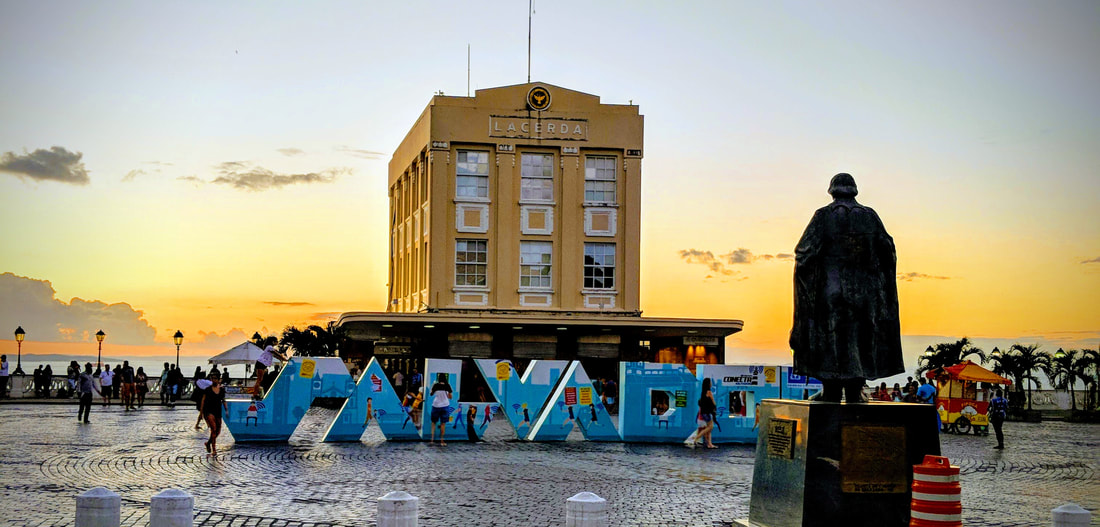






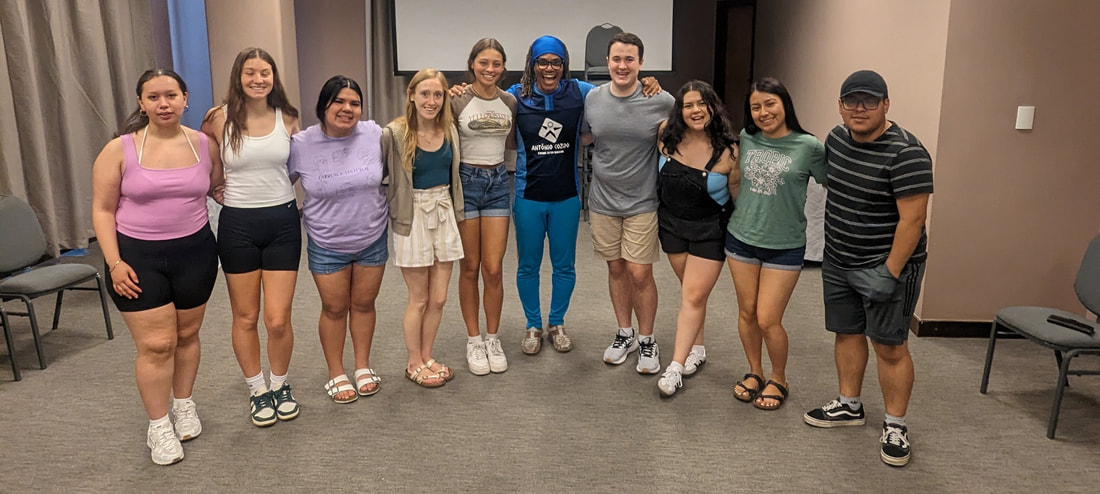




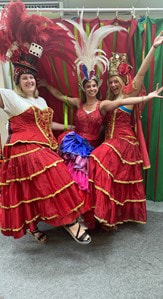

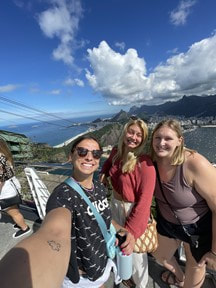
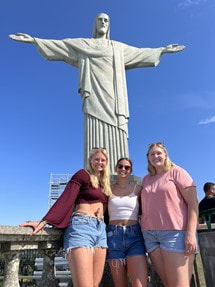


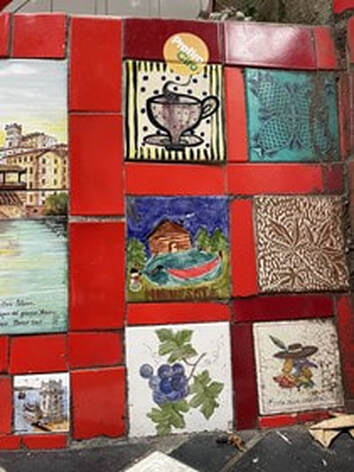
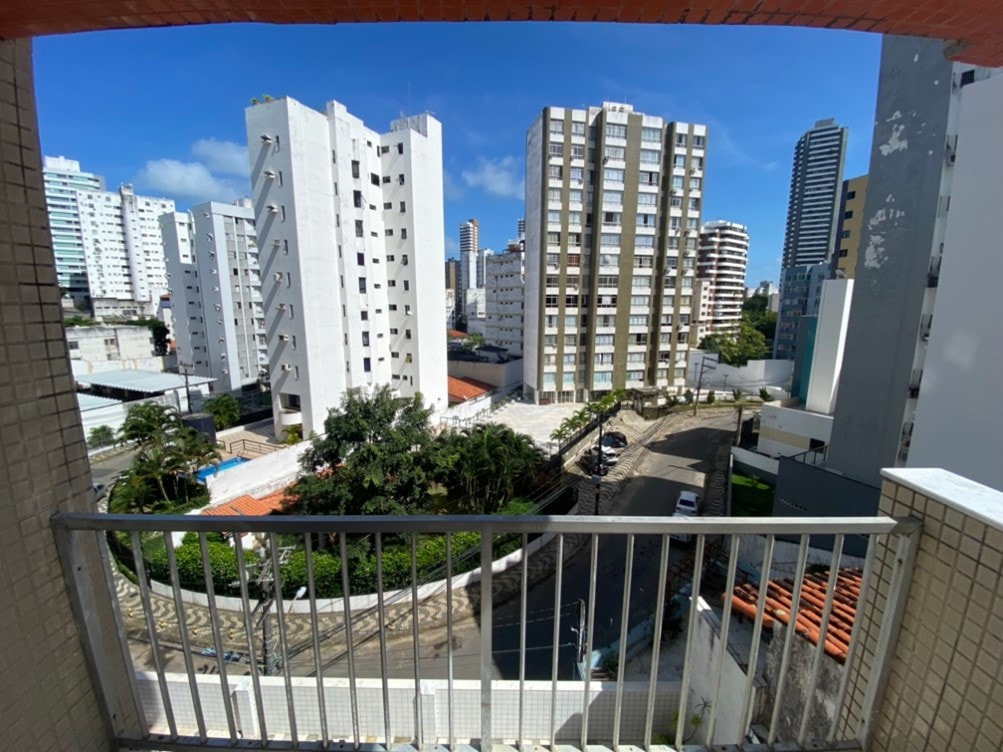
 RSS Feed
RSS Feed
